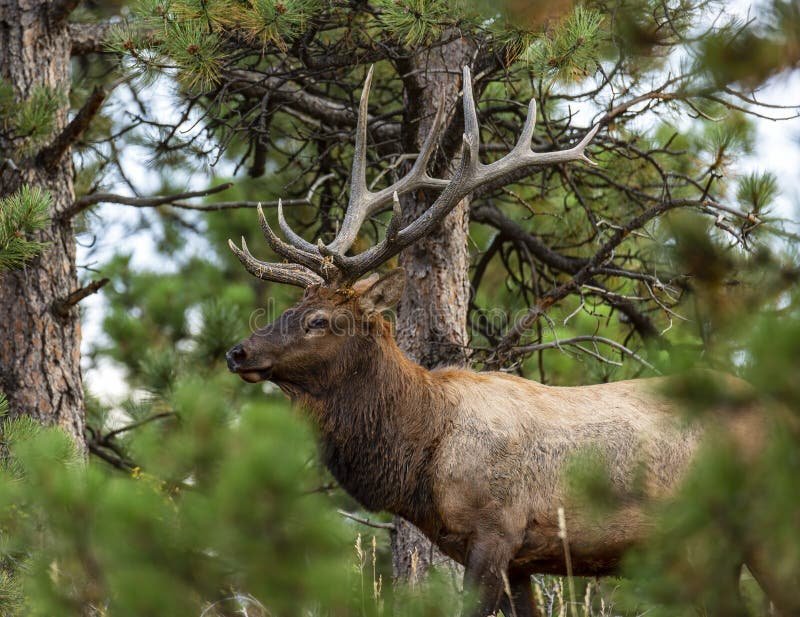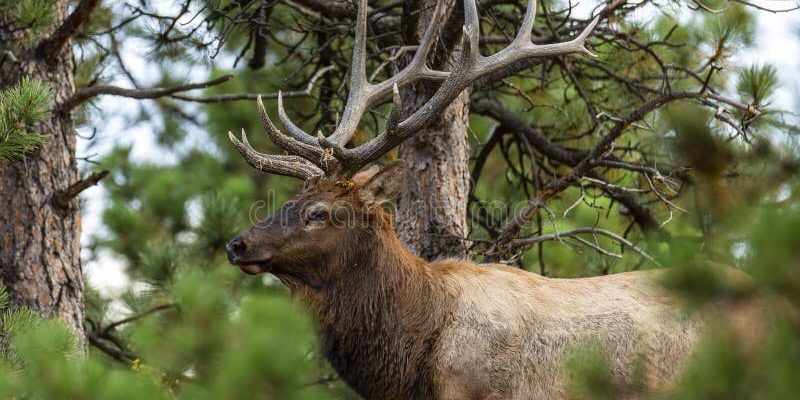
Imagine a giant puzzle. Each piece plays a unique role, and without one, the whole picture is incomplete. The wapiti serves as one of those crucial pieces, maintaining the balance in its environment and supporting a variety of species. Let’s dive into how this magnificent creature fits into the larger scheme of nature, and why it’s so important to protect them and their habitats.
Understanding the Wapiti
Wapitis belong to the deer family, and they are one of the largest species in that group. Adult males can weigh anywhere from 700 to 1,100 pounds, and they are known for their impressive antlers, which can grow up to four feet long. Females, or cows, are smaller and typically weigh between 500 to 600 pounds. These stunning creatures are often spotted in herds, especially during the autumn mating season when the males display their antlers and engage in vocal contests known as “bugling.”
Wapitis are herbivores, primarily feeding on a diet of grasses, woody shrubs, and bark. Think of them as nature’s lawnmowers. By grazing, they help keep plant growth in check, promoting diversity within their habitat. This balance of vegetation is crucial because it creates a rich environment for other species to thrive.
The Wapiti’s Impact on Vegetation
Here’s the thing: wapitis are more than just grazers; they are essential to plant health and diversity. Their feeding habits influence the types of plants that flourish in their environment.
When wapitis graze, they often target certain plants over others. This selective feeding can reduce the abundance of some species while allowing others to thrive. For example, when wapitis eat the tops of willow and aspen, they can encourage the growth of grasses and herbs, which in turn supports other herbivores like rabbits and deer. This creates a ripple effect, promoting a healthy ecosystem where various species can coexist.
Additionally, wapitis play a role in seed dispersal. As they move through their habitat, they consume fruits and seeds, which can later be excreted in different locations. This process aids in plant reproduction and helps maintain genetic diversity among plant populations.
The Role of Wapiti in Predator-Prey Dynamics
Wapitis are also central to the dynamics of predator and prey relationships. They serve as a primary food source for large predators like wolves and mountain lions. When wapiti populations thrive, predators often flourish too, creating a dynamic balance in the ecosystem.
However, this relationship can become complex. For instance, a decline in wapiti numbers can lead to food scarcity for predators, forcing them to shift their hunting patterns or even hunt livestock. Conversely, if predator populations are high, wapiti herds may shrink due to increased predation, leading to overgrowth of vegetation.
This balancing act is crucial. Healthy wapiti populations support stable predator populations, which help regulate other herbivore species, preventing overgrazing and promoting a balanced ecosystem overall.
Wapiti’s Role in Soil Health
You might be surprised to learn that wapitis contribute to soil health as well. Their grazing habits impact soil composition and nutrient cycling. When they feed on vegetation, they leave behind manure that enriches the soil, returning nutrients and supporting plant growth.
This dung serves as a natural fertilizer, promoting the growth of grasses and other plants. Healthy soil is fundamental for sustaining diverse plant life, which in turn supports a wide range of other species, from insects to larger mammals.
Furthermore, wapitis create paths as they traverse their habitats, which can help improve water infiltration into the ground. This encourages a more resilient ecosystem, especially in areas prone to erosion or water runoff.
The Wapiti’s Role in Human Ecosystems
Humans have also recognized the importance of wapitis, not just as a part of the natural ecosystem but as a cultural and recreational resource. Across North America, elk hunting is a popular activity, regulated to ensure sustainable populations.
Moreover, wapitis attract wildlife enthusiasts and tourists who visit national parks and reserves to observe them in their natural habitat. This ecotourism generates income for local communities and highlights the need for conservation efforts.
Protecting these magnificent animals means safeguarding entire ecosystems, ensuring that future generations can enjoy their beauty and the benefits they provide.
Conservation Efforts and Challenges
Despite their importance, wapiti populations face numerous threats, including habitat loss, climate change, and overhunting. Urban development has encroached on their habitats, reducing the space they have to roam and feed.
Conservation organizations work tirelessly to protect wapiti and their habitats, advocating for policies that support wildlife corridors and sustainable land use. Programs like rewilding, which aim to restore ecosystems to their natural state, are also vital for wapiti conservation.
Community involvement is key. Educating the public on the role of wapitis in the ecosystem creates advocates for their protection. When people understand how these animals contribute to the health of their environment, they’re more likely to support conservation initiatives.
The wapiti’s role in its ecosystem is a web of interactions that creates balance and supports a variety of life forms. From influencing plant diversity to supporting predator populations and enhancing soil health, this magnificent animal is a cornerstone of its habitat.
As we face environmental challenges, understanding and protecting wapitis becomes increasingly important. Each step we take to conserve their population not only benefits them but also fosters a healthier ecosystem for all species involved. By valuing the wapiti, we are taking a stand for the balance of nature itself. Let’s work together to ensure these stunning creatures continue to roam our landscapes for generations to come.

